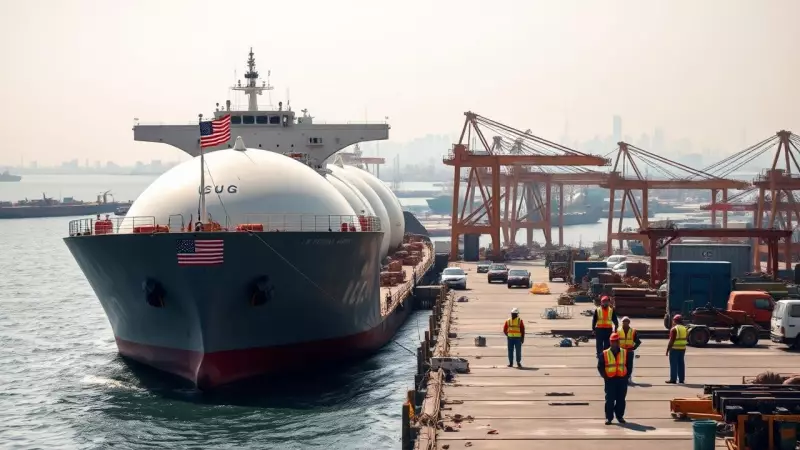
India Forges New Energy Pathway with Historic US LPG Agreement
In a strategic move designed to strengthen its energy security and foster deeper ties with Washington, India has finalized a landmark agreement to purchase 2.2 million tonnes of liquefied petroleum gas (LPG) from the United States. This initial one-year contract, effective from January 2026, represents the first structured procurement of American gas for the Indian market and marks a significant step in diversifying the nation's energy portfolio away from traditional suppliers.
Navigating Global Politics and Securing Supply
The deal arrives amid a complex global energy landscape. As US President Donald Trump endorsed legislation proposing massive tariffs on nations buying Russian oil and gas, India has proactively secured an alternative source. This initiative helps insulate the country from potential punitive measures, as highlighted by US Senators who have specifically named India in the context of such sanctions. The agreement was celebrated by India's Petroleum and Natural Gas Minister, Hardeep Singh Puri, on social media as a "historic first" for one of the world's largest LPG markets.
The logistics of this massive undertaking will be handled by global energy titans Chevron, Phillips 66, and TotalEnergies Trading SA, which will transport the LPG in 48 very-large gas carriers. On the Indian side, the distribution will be managed by the state-run oil majors: Indian Oil Corporation (IOCL), Bharat Petroleum Corporation Ltd (BPCL), and Hindustan Petroleum Corporation Ltd (HPCL).
Impact on Indian Consumers and the Ujjwala Scheme
For the common Indian household, this deal is a cornerstone of stability. The government has reaffirmed its commitment to keeping LPG affordable under the Pradhan Mantri Ujjwala Yojana (PMUY). Despite global price surges of over 60%, subsidized 14.2-kg cylinders will remain priced between ₹500 and ₹550. Minister Puri emphasized that this is possible because the government absorbed over ₹40,000 crore in subsidies last year, ensuring that the actual cost of over ₹1100 per cylinder does not burden consumers.
While this US import volume constitutes about 10% of India's total annual LPG imports—projected at 22 million tonnes—it strategically opens the door for more purchases based on competitive pricing. The contract uses the Mount Belvieu benchmark in the US for pricing, with analysts estimating costs at roughly $650–$700 per tonne for propane and $550–$600 for butane.
A Broader Trade Partnership and Energy Diversification
This LPG agreement is a key component of a budding bilateral trade agreement (BTA) between India and the US. With five rounds of negotiations completed, Commerce Minister Piyush Goyal confirmed that a first-phase closure is imminent, framing the partnership as one built on "fair, equitable ties." The push for diversification is driven by hard numbers: India's reliance on LPG imports jumped from 47% in 2015 to over 67% in 2024, fueled by stagnant domestic production and rising demand from a customer base that now exceeds 33 crore, including 10.3 crore PMUY beneficiaries.
Historically, India has depended on Gulf partners for over 80% of its LPG imports, with Qatar, the UAE, and Saudi Arabia being the primary suppliers. However, recent volatility from Red Sea disruptions and OPEC+ cuts prompted New Delhi to seek more reliable and diverse sources. This landmark deal, born from months of talks and site visits by Indian oil executives to US facilities, is a clear signal that India is taking decisive steps to "shield households from shocks" while "securing supplies" for the future.





